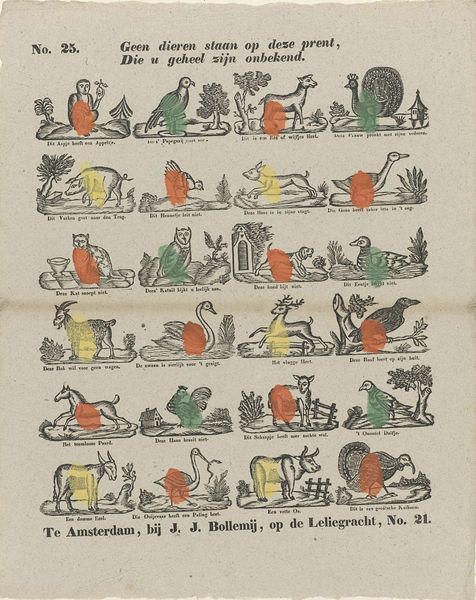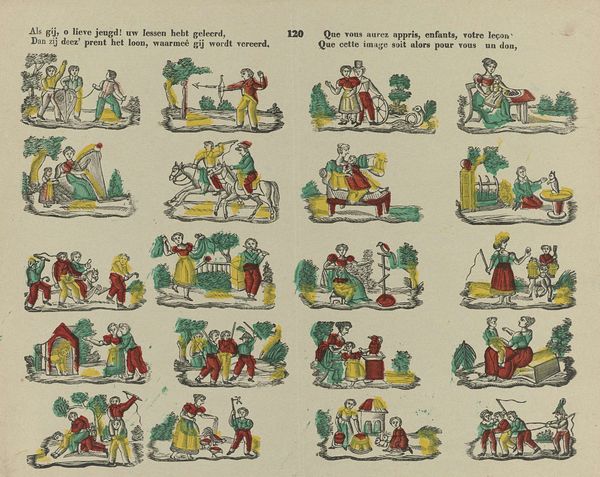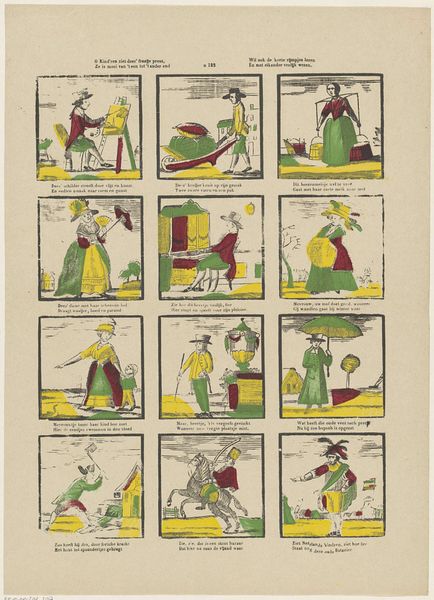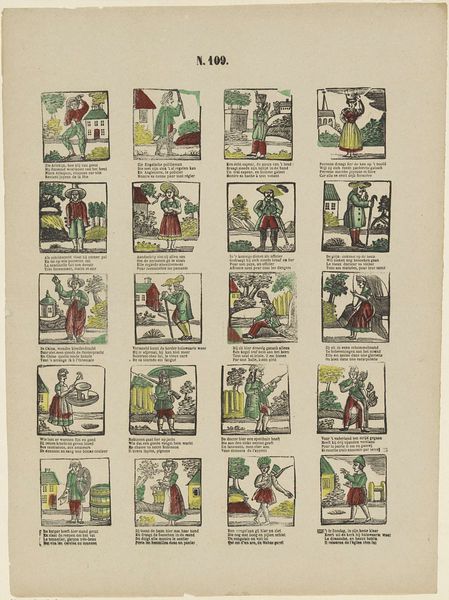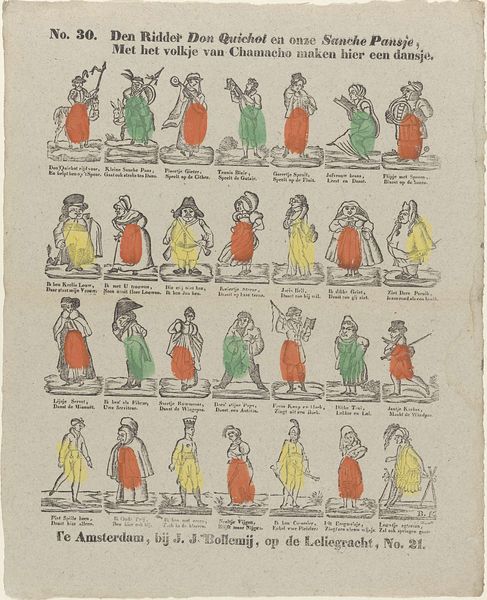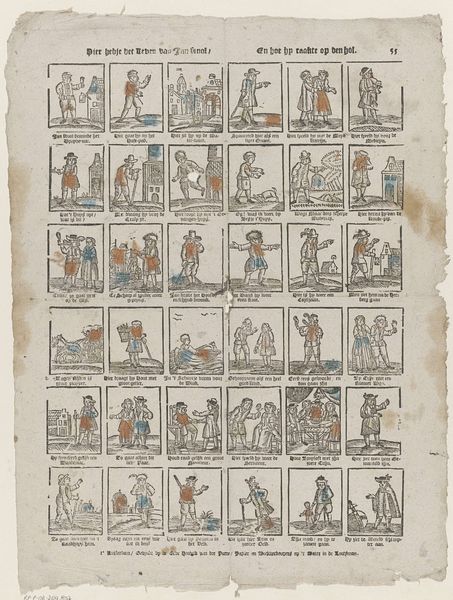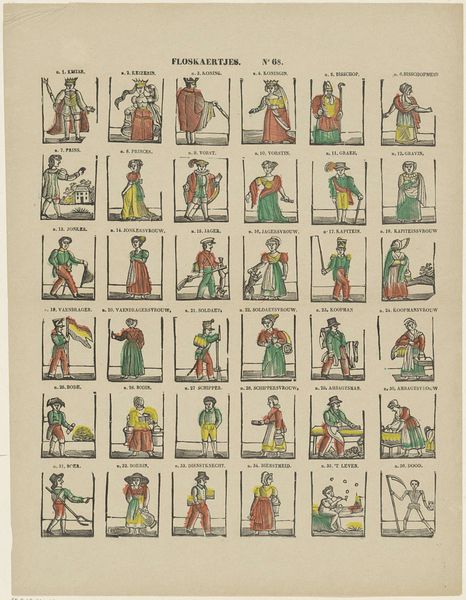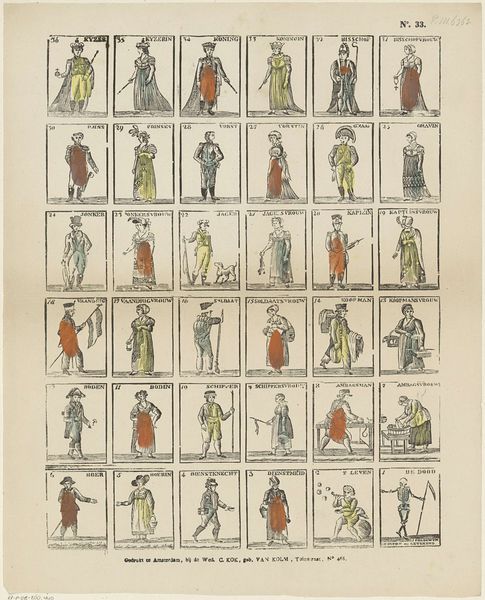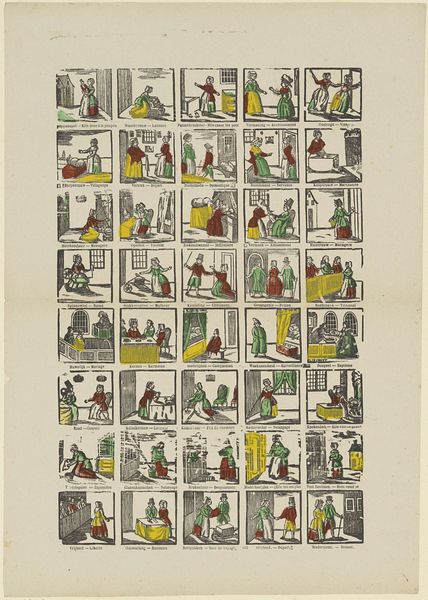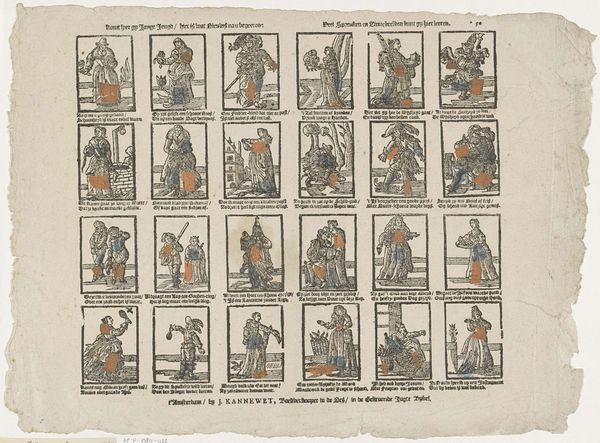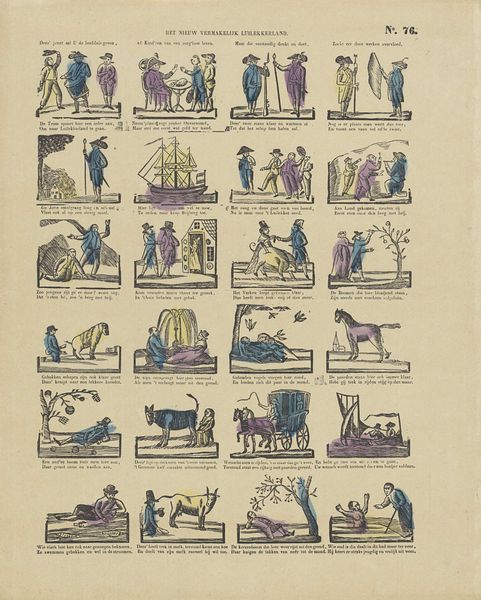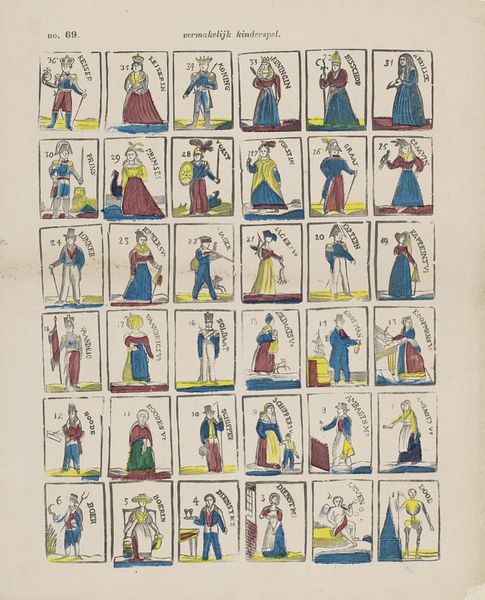
'k schenk , o! Jeugd deez' prent tot loon, / Want nieuwe bzems vegen schoon, / Want hij is toch een wakkre gast; / Die altijd spreekt een woord, waar 't past 1816 - 1849
0:00
0:00
print, etching
#
narrative-art
#
dutch-golden-age
# print
#
etching
#
caricature
#
comic
#
genre-painting
Dimensions: height 419 mm, width 340 mm
Copyright: Rijks Museum: Open Domain
Curator: Look at this fascinating print from the first half of the 19th century. It's attributed to J.J. Bollemij and it’s a complex image combining etching and printing techniques, promising both social commentary and humor. Editor: My immediate thought? This piece looks incredibly handcrafted, almost like a child's coloring book illustration gone slightly askew, with its somewhat crude lines and patches of color. I wonder about the labour and printing process used to produce many copies of this detailed image, what does it suggest about who could afford or access it? Curator: Absolutely, that handcrafted impression is vital. Note the title, "'k Schenk , o! Jeugd deez' prent tot loon, / Want nieuwe bzems vegen schoon, / Want hij is toch een wakkre gast; / Die altijd spreekt een woord, waar 't past.” There’s an invitation to see this as educational, but also implicitly a moral commentary on figures behaving a certain way, captured in little frames that call to mind our relation to caricature. The image evokes themes tied up in childhood morals, lessons delivered in this accessible format, and, notably, images related to cleaning or tidiness. What meanings were conveyed through everyday situations presented through allegorical language in popular media for people in 19th century Amsterdam? Editor: It’s amazing how densely packed with figures this print is, which speaks volumes to its original intended function. Perhaps cheap enough to paste on walls in local taverns and broadsheets where the paper stock was rough, and production, though clearly systematic, left traces of human involvement? The way figures fill every corner really emphasize the contrast to how we mass produce images today with very fine papers and inks and photorealistic approaches that try to hide the machinery and hands behind the final results. Here, you are invited to be conscious of that human labor of the printer and those bringing materials together in the shop or studio of Bollemij. Curator: Yes, the figures do look like types representing well known professions and also figures representing idleness or mockery, almost acting as warnings about bad behavior. And Bollemij may be poking fun but the print also reinforces social values in a way people may find cathartic—it gives them a laugh at someone else’s expense, all while seemingly affirming traditional notions of work and behavior. Editor: Right, but isn't it intriguing to imagine those viewers engaging with it? Not passively receiving the 'message', but turning over those images to read situations against the grind of daily life for them. Curator: A possibility certainly, to re-work traditional messages as you say... What’s striking here is how it condenses social life onto a single page and invites the viewer to play with familiar characters. Editor: So it goes without saying, that we, separated by centuries from that social life, can engage with the medium today by reflecting on what values continue to reverberate through our modern daily life and what materials continue to mediate it all.
Comments
No comments
Be the first to comment and join the conversation on the ultimate creative platform.
